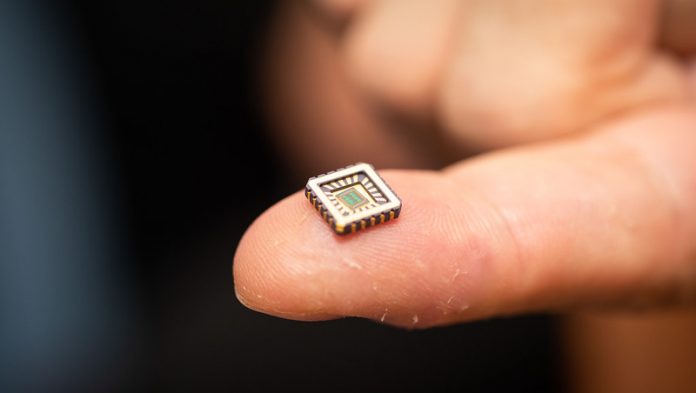Source: Thailand Medical News Dec 11, 2019 5 years, 4 months, 2 weeks, 2 days, 17 hours, 21 minutes ago
Researchers through an international collaboration have developed artificial neurons on silicon chips that behave just like neurons in the body. The first-of-its-kind achievement could lead to the development of medical devices for treating chronic diseases, such as heart failure, Alzheimer’s disease, or other neurodegenerative disorders. Critically, the artificial neurons not only behave just like biological neurons, but require just one-billionth the power of a microprocessor, making them ideally suited for use in medical implants and other bio-electronic devices.

Dr Alain Nogaret, PhD, professor from the University of Bath department of physics and lead researcher told
Thailand Medical News, “Until now neurons have been like black boxes, but we have managed to open the black box and peer inside. Our work is paradigm-changing because it provides a robust method to reproduce the electrical properties of real neurons in minute detail. But it’s wider than that because our neurons only need 140 nanoWatts of power. That’s a billionth of the power requirement of a microprocessor, which other attempts to make synthetic neurons have used. This makes the neurons well suited for bio-electronic implants to treat chronic diseases.”
The team of international of researchers, led by the University of Bath team, and including collaborators at the Universities of Bristol, Zurich, and Auckland, describe the artificial neurons in a study published in
Nature Communications, titled, “Optimal solid-state neurons.”
Conceptualizing and designing artificial neurons that respond to electrical signals from the nervous system in the same way that real neurons would has been a major goal in medicine for decades, as it would open up the possibility of curing conditions in which neurons don’t work properly, have had their processes severed, as in spinal cord injury, or have died. Artificial neurons could repair diseased biocircuits by replicating their healthy function and responding adequately to biological feedback to restore body functions.
Though, developing artificial neurons comes with immense challenges associated with the complex biology and hard-to-predict neuronal responses. “The difficulty of measuring microscopic parameters that control the dynamics of ionic currents and the nonlinearity of ionic conductances has hampered so far theoretical efforts to build quantitative computational models and subsequently neuromorphic devices replicating the exact response of a biological neuron,” the authors wrote.
Although in the past, silicon neurons, synapses, and brain-inspired networks have all been proposed, but these designs weren’t meant to recapitulate the behavior of biological cells in detail, rather, they were intended to help identify “the organizing principles of biology” that could be applied to practical devices. “The increasing focus on implantable bioelectronics to treat chronic disease is however changing this paradigm and is instilling new urgency in the need for low-power analog solid-state devices that accurately mimic biocircuits.
In their study to design artificial neurons, the researchers successfully modeled and derived equations to explain how neurons respond to electrical stimuli from other nerves. This is a hugely complicated task, as responses are “non-linear,” such that a doubling of signal strength may not elicit a rea
ction doubling. The response may be more, or less than double.
The research team then designed silicon chips that accurately modeled biological ion channels, and confirmed that their silicon neurons precisely mimicked real, living neurons responding to a range of stimulations. To demonstrate their models the researchers accurately replicated the complete dynamics of hippocampal neurons and respiratory neurons from rats, under a wide range of stimuli. “We built six-channel silicon devices that faithfully model CA1 hippocampal and respiratory neurons,” they stated. “The completed models predict the membrane voltage of biological neurons in excellent agreement (94–97%) with the membrane voltage oscillations observed in response to 60 different current protocols.”
There is tremendous potential applications the researchers believe. “For example, we’re developing smart pacemakers that won’t just stimulate the heart to pump at a steady rate but use these neurons to respond in real-time to demands placed on the heart which is what happens naturally in a healthy heart,” Nogaret stated.
For example, in heart failure, neurons in the base of the brain do not respond properly to nervous system feedback, they in turn do not send the right signals to the heart, which then does not pump as hard as it should. “For example, the respiratory neurons which we have modeled, couple the respiratory and cardiac rhythms and are responsible for respiratory sinus arrhythmia,” the authors commented. “Loss of this coupling through age or disease is a prognosis for sleep apnoea and heart failure. Therefore, a device that adapts to biofeedback in the same way as respiratory neurons may offer a much needed therapy for heart failure. Our accurate description of the neurobiology within a model derived from silicon physics answers this need.”
Other potential applications could be in the treatment of conditions like
Alzheimer’s and neuronal degenerative diseases more generally, Nogaret suggested. “Our approach combines several breakthroughs. We can very accurately estimate the precise parameters that control any neurons behavior with high certainty. We have created physical models of the hardware and demonstrated its ability to successfully mimic the behavior of real living neurons. Our third breakthrough is the versatility of our model which allows for the inclusion of different types and functions of a range of complex mammalian neurons.”
“This work opens new horizons for neuromorphic chip design thanks to its unique approach to identifying crucial analog circuit parameters.” commented study co-author Giacomo Indiveri, PhD, from the University of Zurich and ETF Zurich.
“Replicating the response of respiratory neurons in bioelectronics that can be miniaturized and implanted is very exciting and opens up enormous opportunities for smarter
medical devices that drive towards personalized medicine approaches to a range of diseases and disabilities.” said co-author, Julian Paton, PhD, a physiologist at the University of Auckland and the University of Bristol.
Reference: Abu-Hassan, K., Taylor, J.D., Morris, P.G. et al. Optimal solid state neurons. Nat Commun 10, 5309 (2019) doi:10.1038/s41467-019-13177-3
Published 03 December 2019 DOI https://doi.org/10.1038/s41467-019-13177-3
